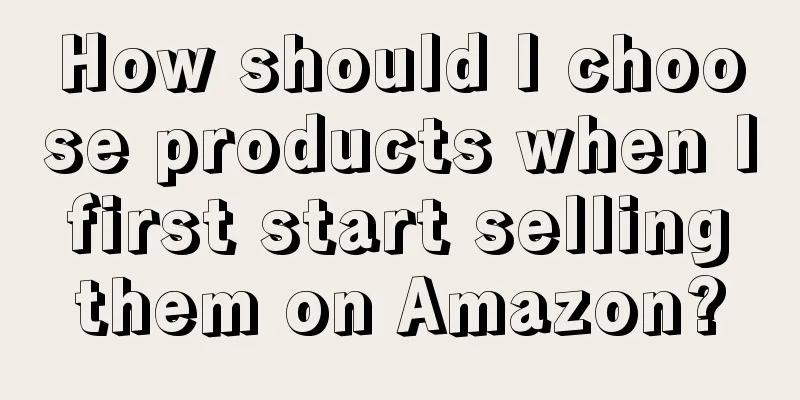Taobao live e-commerce, attacking the metaverse

While major companies are struggling in the field of Metaverse, Baidu among BAT has returned to the spotlight with "Wen Xin Yi Yan" similar to ChatGPT; Tencent is busy responding to the news of "the disbandment of the XR team", saying that the relevant business teams have been adjusted; the remaining Alibaba is focusing on Metaverse e-commerce, but the heat seems to be only on Double Eleven. In fact, Alibaba's Metaverse e-commerce portal has been quietly built into Taobao Live. From the experience alone, Taobao's Metaverse space is quite lively. In January this year, Taobao launched the Metaverse New Year Festival. You can enter by searching for “Yunnan Metaverse New Year Festival” on the Taobao App. The event was held in the virtual space of "Future City", where the government created a whole "New Year Goods Street" to display New Year goods by region. After the event, this area also became a landscape of Future City. As Taobao's main Metaverse space, Future City was launched as early as 2022. It is embedded in the Taobao App, and users can carry out activities with their virtual avatars created in "Taobao Life". The Metaverse Commercial Street created during last year's Double Eleven triggered speculation in the industry about Metaverse e-commerce. 1. Is Taobao’s “Future City” the future of Metaverse e-commerce?There is a very small icon in the upper right corner of the Taobao live broadcast interface with the barely visible words "Future City" written on it. Click it to jump in. We can look at this from three dimensions:
1. Basic setting systemEntering the "Future City", the way to make the virtual avatar move is similar to other platforms. On the left hand side is a wheel to control the direction, and sliding the screen with the right hand can change the perspective. The operation that is in line with user habits is not difficult to get started, but the sensitivity after it starts moving is a little beyond imagination. It is normal to run at high speed without direction for a while, and it is often impossible to stop accurately in front of the person you want to communicate with. In the upper left corner of the main interface is the task area. Click it to complete the task and get the corresponding crystal reward. However, the process of completing the task is relatively mechanical. Users only need to click, and the rest is left to the system, which does not give them a strong sense of participation. For example, for the task of "enter the store today", after clicking, you will automatically jump to the store entrance, which means the task is completed, and a prompt for reward will pop up. The crystals you get can be used for a lucky draw. Click "Lucky Draw" in the lower right corner to enter the "Win a Gachapon" activity interface. Ten crystals can be used for a lucky draw, and the prize pool includes various coupons, red envelopes, and virtual costumes for Taobao Life. Although such a redemption system cannot be said to be perfect, after all, it is easy for the "non-Africans" to spend all the crystals they have worked hard to save on the lottery, and they may not win the ideal prize in the end, but it can still make the platform users have some fun in playing the game and have the motivation to participate in order to get discounts. In addition, when you are parkouring on the map, you may sometimes encounter a floating red envelope, which can be opened by touching it, and a random reward will be dropped. But from the experience of Jam Girl, the chance of winning is not high. By clicking on the map in the upper right corner of the main interface, we can take a look at the architectural layout of the Future City, which includes gathering areas for brands and anchor stores, as well as viewing areas and interactive facilities, which are similar to the current mainstream Metaverse platforms. In terms of infrastructure, the Future City has taken shape, and because it conforms to the public's usage habits, it has greatly lowered the threshold for integration. However, its gameplay system is still relatively monotonous, and many facilities are still idle, such as the vending machines and seats in the central station. The virtual avatar cannot make purchases or sit down, and sometimes even penetrates the model, and the experience does not meet expectations. 2. Brand marketing methodsOne of the most important components of an e-commerce platform is the brand, so Future City has allocated a considerable area for brands to open stores. In the area where brands gather, users can feel the layout similar to that of an offline commercial street. Considering that during the experience, most stores had similar interaction methods except for different decoration styles such as color tone and product location, we chose the first store we entered, "L'Oréal", as an example. You can locate L'Oreal stores directly through the map. There are L'Oreal brand names, posters and guide arrows at the store entrance, allowing users to recognize the brand at a glance and know how to enter. After controlling the virtual avatar to enter the store, you can see that the main products are placed on the booth opposite the door, and there are brand promotional videos, simultaneous live broadcast rooms, product pages and other content on the wall. You can view and purchase the products in the virtual store by clicking on the detail page. However, the products are not yet adapted to the horizontal screen. If you want to jump to the product page, you need to switch to the vertical screen mode by clicking the button in the upper right corner of the main interface. The same operation applies to the display screens such as the live broadcast room and advertising films on the wall. Some brand stores also have a digital person who plays a role similar to a shopping guide. However, these digital shopping guides are not interactive and can only perform preset actions, and cannot respond to user needs. The "anchor camp" on the other side is also a display window for brand marketing. Looking around, there are many independent small buildings. Some are brand-exclusive, while others are the live broadcast rooms of the anchors. They are generally equipped with a digital person "shouting above their heads", a live broadcast room display screen and some product booths. It is equivalent to a simplified version of a virtual store. The digital people cannot interact, but the live broadcasts and products can be viewed and purchased by clicking. The live broadcast here also needs to be converted to vertical screen mode to jump. After all, Future City was born on an e-commerce platform like Taobao. Its infrastructure for brand marketing is indeed more complete than that of other platforms. Being embedded in Taobao shortens the user's consumption path, and its combination with live streaming is also relatively smooth. Simple operating logic such as tap to jump is more in line with the usage habits of most users. 3. Interactive social situationIn the future city, there are two ways for users to communicate with each other - public chat and private chat . When you meet other users on the road, you can click "whisper", which is a private chat visible only to the two parties in the chat; on the same interface, there is also a "world" channel, which is a public chat visible to all users. At the same time, Future City also has a very romantic way of interaction - setting off fireworks . It supports editing personalized text, and the content will bloom in the form of fireworks in the sky of Future City. At the same time, small words "XXX lit the fireworks" will scroll to remind all users. This form of interaction helps to strengthen social relationships between users and can even serve as a stepping stone from stranger social interaction to acquaintance social interaction. Future City has also set up an external social channel, which relies on a gameplay of "Taobao Life" - taking photos. In some purely tourist areas on the map, Future City has also arranged brand promotional posters. Users can take "group photos" according to the prompts, and support operations such as saving to mobile phones, copying links, and sharing to WeChat. The group photos themselves come with QR codes, and other users can open Taobao or DianTao App to scan the code to view them. In this process, users gain fun and corresponding crystal rewards, the brand further reaches users, and it is also an effective way for the platform to attract new users. It also links with "Taobao Life" in the same ecosystem, achieving multiple goals at one stroke. In addition, users can overlook the Future City from the "Ferris Wheel" and experience walking on the stage in the "T-stage Show" . These interactive methods enhance the immersive feeling of the Future City, so that the entire space is not filled with only advertisements for selling goods. As the saying goes, Tencent, which is good at social networking, has an immortal e-commerce dream, while Alibaba, which has full e-commerce genes, is trying every means to make a living from social networking. Judging from the various social interaction methods in Future City, Alibaba's metaverse social networking has also revealed some clues. 2. Can Taobao’s Metaverse e-commerce become the standard answer?When it comes to e-commerce, Taobao is undoubtedly the big brother. But when e-commerce meets the metaverse, can Taobao still get ahead? Regarding this question, we need to look back at Taobao’s layout in the virtual field over the years. Yes, Taobao is not a novice in this field. As early as 2016, Taobao established a VR laboratory in March and launched the "Buy+" plan in September, trying to build an interactive three-dimensional shopping environment through VR technology. Even today, such an idea is still ahead of its time, and VR devices for consumers are not yet popular. The high threshold led to the failure of the project. But Taobao did not give up. In 2019 and 2020, it launched AR makeup and shoe trials, opened up commodity transaction links, and realized click-to-buy, which can be experienced on mobile phones. Such technological upgrades have greatly increased the possibility of Taobao's vision being implemented, reduced the requirements for user devices, and made it more popular with brands. Also in 2019, Taobao launched a major project - Taobao Life . No one expected that this project, which was only regarded as a small game at the time, would almost become the foundation of the Taobao Metaverse. Users can create their own virtual images, pinch their faces, change clothes, take photos, manage their own space, travel, and form their own small world. They can also connect social spaces based on Taobao friend links. In addition, users' shopping time, shopping preferences, purchase frequency and other big data are all included, making it seem like they really have a "Taobao life". The future city meta-universe space that was born later is where users’ virtual avatars come from, forming an ecological closed loop. In 2021, the year known as the "first year of the Metaverse", Taobao restarted "Buy+", and its DAMO Academy established an XR laboratory to conquer 3D models and holographic technology. At the Yunqi Conference that year, it explained how to build VR models through three-dimensional technology to achieve "traveling around the world without leaving home." In 2022, Taobao's vision finally came to fruition, with the launch of "Future City" and "Mantavos". The latter is a phonetic translation of "Metaverse", which is officially defined as the "Metaverse Silk Road", and sets the goal of "reshaping the people, goods and markets". Mantavos had a high-note opening. In February 2022, the new digital magazine "MO Magazine" jointly planned and launched by Alimama and Xuxu Watson was officially launched. After completing the entire experience, 88% of readers received the reserved easter egg for the interactive experience - the Mantaworth ferry ticket. At the same time, the inaugural issue invited celebrity Jing Boran and digital human AYAYI to shoot the cover, and served as guides of the Metaverse Mantavos, sparking a craze for experience. But the popularity of Mantavos did not last. Compared with the later Future City, its commercial and social aspects were relatively weak. The experience entrance was only open for a few days and then it lost popularity. At this stage, Future City can be said to have the prototype of a consumer metaverse platform, as can be seen from the entry of brands and the social interaction of users. However, there are still some shortcomings that cannot be ignored. First, the lack of content is the main development difficulty. In the experience of Future City, users can easily develop aesthetic fatigue. The problem lies in the homogeneity of brand marketing. The brand’s own cultural content is difficult to present. All stores are similar, even more monotonous than the homepages of stores on Taobao, which violates the value system of the consumer metaverse. This makes it difficult for users to gain a sense of freshness from Metaverse consumption, and naturally it is difficult to retain users. Parkouring in a 3D map is more time-consuming than swiping your finger on a 2D page to make a purchase. Second, the technology is still immature. At present, the gameplay of Future City is still relatively simple, and there are still many parts to be developed on the map. Although this is due to the limitations of the technical environment, it is undeniable that it has a negative impact on the user's shopping experience. For example, brand stores can currently only display a limited number of products, and still maintain the path of clicking to jump to the ordinary product details page. For users, it is better to follow the original online shopping method, and there is no motivation to consume in the Metaverse. On the contrary, if users can drag and rotate products 360 degrees to view them in the Metaverse store, then the Metaverse will have practical value for users. Third, the entrance is too hidden and unstable. During the Jam Girl experience, Future City only opens the search entrance during relevant events, that is, you can enter by searching keywords on Taobao. Outside of the event period, you can only enter from Taobao Live and Taobao Life interfaces, and both require two or more clicks to reach the entrance, which undoubtedly lengthens the distance between users and the entrance. What's more, Jam Girl has experienced the situation where both entrances disappeared at the same time. As a non-disposable metaverse space, the entrance to Future City has indeed blocked many users. It seems that although Taobao has already started its layout in the consumer metaverse, it seems to be still in the trial stage. It may take some time for the brand to continue to operate, and it may only be used as a distribution channel at present. As for whether Future City will become the future of metaverse e-commerce, realizing the upgrade of the consumption environment of "people, goods and places", or will it fall into a mechanical advertising space, let us look forward to the era when technology and content will develop together. Author: Chen Chumu Source public account: Weiguojiang (ID: wjam123456), focusing on the forefront of new media and insights into new consumer fields. |
<<: 7 real cases about growth, I wrote them into small stories to share with you
Recommend
Why can’t I leave a review on Amazon? How can I leave a review?
Obtaining reviews is an important means to improve...
What are the requirements for binding a credit card to Amazon? How to unbind a credit card?
We can buy some overseas products on the Amazon pl...
What is the process for opening a store on Amazon Germany? What information is required?
You can open a store on Amazon. To open a store, y...
Is exchanging RMB for foreign currency settlement or purchase of foreign exchange? What is the difference between the two?
In international trade and travel, the exchange of...
Building an anti-fragile growth model, the global content system of consumer goods and the second growth curve
In today's highly competitive consumer goods m...
How can I open multiple stores in Wish? How to operate them?
Wish is also a long-established cross-border e-com...
New business derived from short dramas: editing videos, posting links, earning commissions...
In addition to short video platforms, the short dr...
How to optimize product categories on Shopee? Comprehensive operation skills
As one of the largest e-commerce platforms in Sout...
What is the difference between an Amazon Professional Seller and an Amazon Individual Seller?
The threshold for opening a store on Amazon is act...
Do I need to pay a deposit to open a store on Wish? What are the requirements for opening a store on Wish?
Today, I will introduce you to the content of open...
Uncovering the hidden links of Zhihu tweets
More and more people are looking for side jobs bes...
Can a novice seller on Amazon sell everything?
As the world's largest e-commerce platform, Am...
Is it difficult to ship on Amazon? How to choose products?
Many friends on Amazon did not choose to cooperate...
The fourth batch of DHgate line adjustments will be implemented on October 31
In order to protect the shopping experience of buy...
Will Amazon limit traffic after a few warnings? How to avoid downgrading traffic?
When doing cross-border e-commerce on Amazon, you ...









